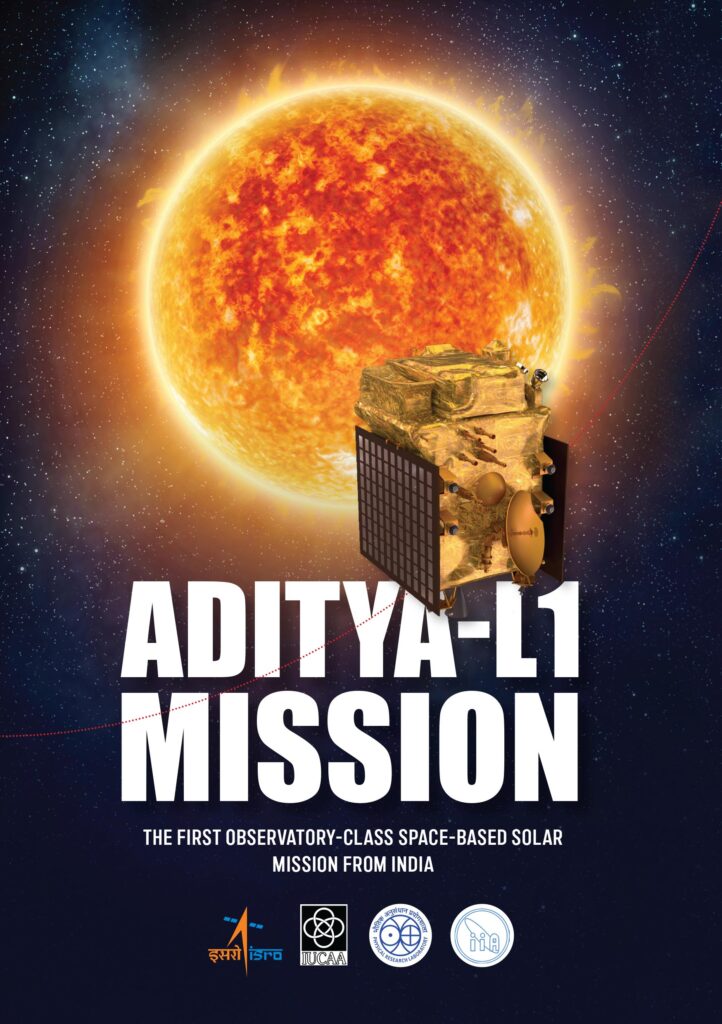Aditya-L1 Mission: What Will It Do If It Doesn’t Land on the Sun? Understanding the Mission’s Purpose in Simple Words
Aditya L1 Mission: Unraveling the Sun’s Secrets – A Journey Beyond the Horizon
Aditya-L1 Mission Launch Updates:
Today, India is preparing for its first solar mission, Aditya-L1. However, unlike the Moon, this spacecraft won’t land on the Sun. The reason is simple: the Sun’s temperature is so incredibly high that no object from Earth can withstand it. So, what is Aditya really going to do in space?
Aditya-L1 Mission Launch:
On July 14th, the Indian Space Research Organization (ISRO) successfully launched the Chandrayaan-3 mission, aiming to land on the South Pole of the Moon. The mission was a success, making history with a successful landing on August 23rd. After exploring the Moon, it’s now time to get closer to the Sun. Today, India’s first solar mission, Aditya-L1, is also getting ready to launch. However, unlike landing on the Moon, Aditya-L1 won’t touch the surface of the Sun. The reason behind this is the scorching temperature of the Sun, which earthly materials can’t endure. So, what’s the real purpose of Aditya-L1? Let’s find out.
Understanding the Aditya-L1 Mission in Simple Words:

In simple terms, Aditya-L1 is an observatory-class mission. It’s India’s first space-based observatory (telescope) dedicated to studying the Sun. Until now, all our studies about the Sun have been conducted using ground-based telescopes located in places like Kodaikanal or Nainital. But we don’t have space telescopes. When you’re on Earth, studying the Sun’s surface with a telescope is impossible because the Sun’s environment is completely different from Earth. We still don’t fully understand why the Sun’s corona is so unbelievably hot. All these questions, which can’t be answered from Earth, will now be explored in space.
India’s Aditya spacecraft will stay at the L1 point in space, which will allow it to keep a 24-hour watch on the Sun’s activities and send back images to Earth.
What Is the L1 Point?
The L1 point is where the gravitational forces of the Sun and Earth balance each other. It’s a place where Earth’s gravity cancels out the Sun’s gravity, creating a stable point in space. The distance from Earth to the Sun is approximately 150 million kilometers, and within this distance, there are five Lagrange points – L1, L2, L3, L4, and L5. These points are named after the Italian astronomer and mathematician Joseph-Louis Lagrange from the 18th century. L1, L2, and L3 are not stable, while L4 and L5 are stable and do not change their positions. L1 is the first point in this system, located about 1.5 million kilometers away from Earth. It’s also known as the Lagrangian point, Lagrange point, libration point, or simply L-point.
Why Was L1 Chosen?
L1 is an ideal location because it allows a continuous view of the Sun’s activities for 24 hours. It’s the place where the gravitational forces of Earth and the Sun create a balance, enabling spacecraft to stay in a fixed position in space. This stability is due to the centripetal force generated at this point, making it possible for a spacecraft to remain stationary. Additionally, L1 doesn’t experience the day-night cycle like Earth, providing a constant view of the Sun. It’s also relatively close to Earth, making communication easier. For all these reasons, L1 is considered an excellent location for solar studies.
THE SPACEWEATHER
The sun’s electromagnetic radiation, heat, and continuous flow of particles and magnetic fields have an ongoing impact on Earth. Solar wind is the term for the continuous flow of solar particles, which are mostly made up of protons with high energy. The known solar system is almost entirely filled with solar wind. The solar system is also filled with the solar magnetic field in addition to the solar wind. The nature of space is impacted by the solar wind as well as other violent or eruptive solar occurrences like the Coronal Mass Ejection (CME). These occurrences alter the magnetic field’s characteristics as well as the environment of charged particles close to the planet. A magnetic disturbance can occur close to the Earth in the case of the Earth when the Earth’s magnetic field interacts with the field delivered by the CME. Such occurrences may interfere with the operation of space assets. Space weather is the term used to describe shifting climatic conditions in space around Earth and other planets. We utilize more and more technology in space because it is crucial to comprehend space weather. Additionally, knowledge of the space weather close to Earth provides insight on the behavior of the space weather on other worlds.
Aditya-L1 Mission‘s Key Objectives:
Here are the main objectives of the Aditya-L1 mission, presented in a tabular format:
| Objective | Description |
| 1. Studying the solar atmosphere | Investigating the Sun’s atmosphere and understanding the heating of the chromosphere and corona. |
| 2. Investigating solar flares | Researching solar flares and their impact on space weather and Earth. |
| 3. Measuring the solar corona’s properties | Measuring the physical properties and temperature of the solar corona. |
| 4. Examining coronal and plasma | Examining coronal and coronal loop plasma to gather data on temperature, velocity, and density. |
| 5. Investigating solar winds | Exploring the origin, structure, and dynamics of solar winds. |
The Aditya-L1 mission promises to be a significant step in solar science, providing valuable insights into the workings of our Sun and its impact on our planet and the wider solar system. Stay tuned for updates as India’s first solar observatory ventures closer to this cosmic giant. for more details












